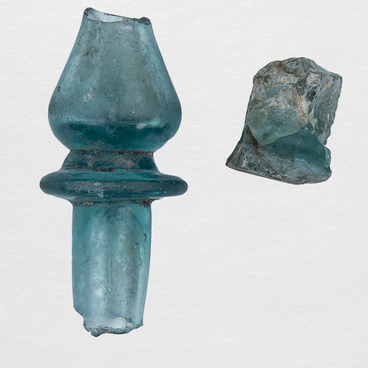In 1666, Pogar was granted the Magdeburg Law — a special municipal government system. According to this system, the towns were granted economic and legal independence from landowners and military officers, such as Cossack atamans and sotniks. The system was developed in the 13th century and named after the German town of Magdeburg. The codes of German law Sachsenspiegel, also known as “Saxon Mirror”, and Magdeburg town charters were the basis for the Magdeburg Law, which established rules of trade, elected members of the city government, and determined how the merchants and craftsmen’s union should operate.
In the 17th century, craftsmen’s guilds, that is fraternities of craftsmen who worked and rested together, and even worked for charitable causes, were established in Pogar.
In 1675, the kravtsy’s (a local name for tailors) guild was organized. Just like other craftsmen, kravtsy formed fraternities at churches. The tailors were part of the St. Athanasius Church parish.
The kravtsy tailors were divided into two categories — thin and thick. The so-called thin craftsmen sewed elegant women’s clothes from expensive fabrics. The thick ones mainly made coarse peasant clothes such as homespun coats, cloth jackets, and sheepskin coats. In winter, they went to a faraway village and worked there to fulfill all orders by the spring.
Garments made by the Pogar kravtsy were available at all the Bryansk region’s fairs. The clothes were notable for their good quality, but their seams were bulky and therefore had been nicknamed “scars”.
Each guild had its own khorugv. It is a banner with an icon installed on a high pole.
The tailors embroidered brocade or velvet khorugvs with gold and decorated them with fringes and tassels, and their poles were made of wood. The banner had an image of St. Nicholas, who was considered the patron saint of tailors. Tailor’s scissors, a symbol of the guild, were also depicted. During festive church services, the fraternity members placed khorugvs on the right and left sides of a kliros — a place for chanters and church choir. Before the start of a Cross Procession, khorugv-bearers put on sticharion — special long clothes. Khorugvs were always carried by their guilds’ craftsmen.
The Radogosch Museum houses a reconstructed khorugv of the kravtsy’s guild. The banner was recreated by the museum employees.
In the 17th century, craftsmen’s guilds, that is fraternities of craftsmen who worked and rested together, and even worked for charitable causes, were established in Pogar.
In 1675, the kravtsy’s (a local name for tailors) guild was organized. Just like other craftsmen, kravtsy formed fraternities at churches. The tailors were part of the St. Athanasius Church parish.
The kravtsy tailors were divided into two categories — thin and thick. The so-called thin craftsmen sewed elegant women’s clothes from expensive fabrics. The thick ones mainly made coarse peasant clothes such as homespun coats, cloth jackets, and sheepskin coats. In winter, they went to a faraway village and worked there to fulfill all orders by the spring.
Garments made by the Pogar kravtsy were available at all the Bryansk region’s fairs. The clothes were notable for their good quality, but their seams were bulky and therefore had been nicknamed “scars”.
Each guild had its own khorugv. It is a banner with an icon installed on a high pole.
The tailors embroidered brocade or velvet khorugvs with gold and decorated them with fringes and tassels, and their poles were made of wood. The banner had an image of St. Nicholas, who was considered the patron saint of tailors. Tailor’s scissors, a symbol of the guild, were also depicted. During festive church services, the fraternity members placed khorugvs on the right and left sides of a kliros — a place for chanters and church choir. Before the start of a Cross Procession, khorugv-bearers put on sticharion — special long clothes. Khorugvs were always carried by their guilds’ craftsmen.
The Radogosch Museum houses a reconstructed khorugv of the kravtsy’s guild. The banner was recreated by the museum employees.



